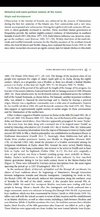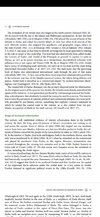Idilinaa
VIP
Coupled with the medieval sources by both internal (Tarikh Al Walashma ) and external (Al-Maqrizi) that states the population and sultans originate/connected with Jabarta region and Zayla which is northern Somalia and its for this precise reason that Oxford archeological studies says that the Showa region became dominated by a Somali-speaking entity, because it is a reflected in the cultural change that took place:

The Camel is central to the the the proliferation of Muslim polities/provinces and also the main advantage Somalis had as the core Muslim group in the region which was not only our inhabited geography which featured plains and plateus that facilitated in smooth movement of goods, people and ideas and a coastline that allowed for over sea trade to red sea/indian ocean networks, but also more importantly the use of camel to transportion/distribution of goods into different region and provinces and this camel use is what later led to formation of towns and cities and economic growth.
This also reflected in Medieval Archeology with caravan stations seen across
The Archaeology of the medieval trade networks in Western Somaliland
Their avoidance of the use of camel hindered them in many respects in my opinion because throughout the North Africa, Near East and Arabia with the introduction of the camel they abandoned the ox and donkey cart which became a more effecient way for transport and even in central asia such as the Bactarian camel breed to be more suited to a colder climate. Early on people throughout the region understood the economic importance of the camel as a vehicle for economic development
Lack of it led to limiting transportation efficiency, reducing access to distant markets, increasing isolation from broader trade networks, and restricting their economic adaptability for the Highlands.
A short article i read a while back on why camel was pereffered over the wheel:
 www.notechmagazine.com
www.notechmagazine.com
The Camel is central to the the the proliferation of Muslim polities/provinces and also the main advantage Somalis had as the core Muslim group in the region which was not only our inhabited geography which featured plains and plateus that facilitated in smooth movement of goods, people and ideas and a coastline that allowed for over sea trade to red sea/indian ocean networks, but also more importantly the use of camel to transportion/distribution of goods into different region and provinces and this camel use is what later led to formation of towns and cities and economic growth.
This also reflected in Medieval Archeology with caravan stations seen across
The Archaeology of the medieval trade networks in Western Somaliland
This network allowed and boosted the emergence of powerful state structures in the region, visible in the building of caravan stations and fortresses and the development of urban centres along the trade routes.
These Qalcadda, a caravanserai or caravan station. Qalcadda is exceptional for many reasons. It is the only caravanserai a plan and design similar to those from the Middle East having found so far in Subsaharan Africa, but it is also a clear example of the close cultural and economic relationships between Somaliland, Arabia and the Middle East during the Middle Ages.
Their avoidance of the use of camel hindered them in many respects in my opinion because throughout the North Africa, Near East and Arabia with the introduction of the camel they abandoned the ox and donkey cart which became a more effecient way for transport and even in central asia such as the Bactarian camel breed to be more suited to a colder climate. Early on people throughout the region understood the economic importance of the camel as a vehicle for economic development
Lack of it led to limiting transportation efficiency, reducing access to distant markets, increasing isolation from broader trade networks, and restricting their economic adaptability for the Highlands.
A short article i read a while back on why camel was pereffered over the wheel:
The Best Invention Since The Wheel
The Best Invention Since The Wheel
“Between the third and seventh centuries AD, the civilizations of the Near East and North Africa gave up wheeled vehicular transportation and adopted a more efficient and speedier way of moving goods and people: They replaced the wagon and cart with the camel. This deliberate rejection of the wheel in the very region of its invention lasted for more than one thousand years. It came to an end only when major European powers, advancing their imperialistic schemes for the Near East, reintroduced the wheel.”
“The camel as a pack animal was favored over wheeled transportation for reasons that become obvious when the camel is compared with the typical ox-drawn vehicle. The camel can carry more, move faster, and travel farther, on less food and water, than an ox. Pack animals need neither roads nor bridges, they can traverse rough ground and ford rivers and streams, and their full strength is devoted to carrying a load and not wasted on dragging a wagon’s deadweight. Once the camel and ox are compared, one wonders why the wheel was ever adopted in that region in the first place.”
Last edited:






